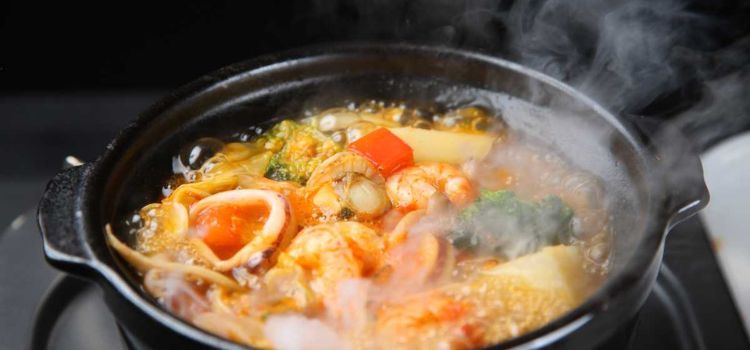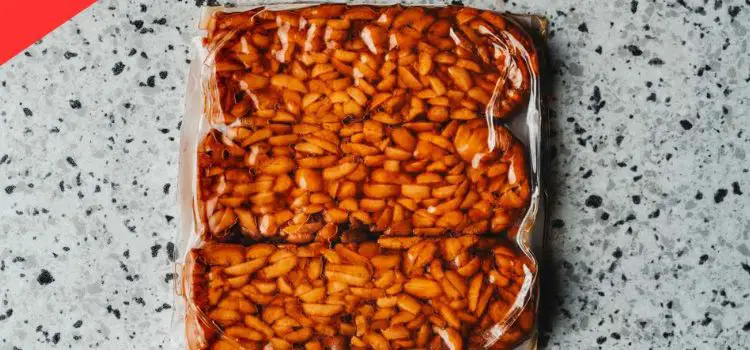As an Amazon Associate, I earn from qualifying purchases

Vacuum sealing has become a popular method for preserving food, offering a way to extend shelf life and maintain freshness by removing air from packaging. This technique is commonly used for storing everything from fresh produce to cooked meals, making it a staple in many kitchens. But what about vacuum sealing hot food?
Is it possible, and if so, is it safe? In this article, we’ll explore the ins and outs of vacuum sealing hot food, examining the benefits, risks, and best practices to ensure safe and effective preservation.
Benefits and Risks of Vacuum Sealing Hot Food
Vacuum sealing hot food might seem like a convenient way to lock in flavors and nutrients immediately after cooking. However, it’s essential to weigh the potential benefits against the risks involved.
Potential Benefits of Sealing Hot Food
- Immediate Preservation of Flavor and Nutrients : Sealing food while it’s still hot can theoretically capture the peak flavors and nutrients, preserving them for later enjoyment. This can be particularly appealing for dishes that are best enjoyed fresh, as the vacuum seal can help maintain their original taste and texture.
- Convenience in Meal Prep and Storage : For those who prepare meals in bulk, vacuum sealing hot food can streamline the process, allowing for quick storage without waiting for food to cool. This can save time and make meal prep more efficient, especially for busy households.
Risks and Challenges Involved
- Risk of Bacterial Growth : One of the primary concerns with vacuum sealing hot food is the risk of bacterial growth. When food is sealed while still warm, it creates an environment conducive to bacteria, particularly if the temperature is not adequately controlled. This can lead to foodborne illnesses if not handled properly.
- Potential Damage to Sealing Equipment : Vacuum sealing equipment is typically designed for use with cooled or room-temperature foods. Sealing hot food can introduce moisture into the machine, potentially damaging the equipment or compromising the seal’s integrity. This can result in a less effective seal and reduced food preservation.
Step-by-Step Guide to Vacuum Sealing Hot Food Safely
To safely vacuum seal hot food, it’s crucial to follow specific steps to minimize risks and ensure the best results.
1.Allowing Food to Cool to a Safe Temperature
Before sealing, allow the food to cool to at least room temperature. This reduces the risk of bacterial growth and prevents moisture from affecting the seal. Spread the food out on a baking sheet or use an ice bath to speed up the cooling process if necessary.
2.Preparing the Vacuum Sealing Equipment
Ensure your vacuum sealer is clean and in good working condition. Use high-quality vacuum bags designed to withstand temperature variations, as these will provide a more reliable seal.
3.Proper Sealing Technique to Avoid Moisture Issues
When sealing, ensure that the food is dry and free from excess moisture. If necessary, pat the food with paper towels to remove any surface moisture. This helps create a strong seal and prevents moisture from entering the vacuum sealer.
4.Recommendations for Storage Post-Sealing
Once sealed, label the bags with the date and contents, then store them in the refrigerator or freezer as appropriate. This helps keep track of freshness and ensures that the food is consumed within a safe timeframe.
Tips for Best Results

To achieve the best results when vacuum sealing hot food, consider these tips:
- Ensuring Proper Cooling Before Sealing: Always allow food to cool to a safe temperature before sealing. This not only prevents bacterial growth but also helps maintain the food’s texture and flavor.
- Using High-Quality Vacuum Bags: Invest in durable, high-quality vacuum bags that can withstand temperature changes. These bags are less likely to puncture or fail, ensuring a reliable seal.
- Monitoring Sealed Food for Spoilage: Regularly check sealed food for signs of spoilage, such as off smells or changes in texture. If any issues are detected, discard the food to prevent potential health risks.
Alternative Methods for Storing Hot Food
If vacuum sealing hot food seems too risky, consider these alternative storage methods:
Refrigeration and Cooling Before Sealing
Allow food to cool completely before refrigerating or vacuum sealing. This method is safer and helps maintain the food’s quality over time.
Using Airtight Containers
Store hot food in airtight containers designed to handle temperature changes. These containers can be a convenient and safe alternative to vacuum sealing.
Comparing Methods in Terms of Efficiency and Safety
While vacuum sealing offers excellent preservation, cooling food before sealing or using airtight containers can be more efficient and safer for hot foods. Consider your specific needs and preferences when choosing a method.
Conclusion
Vacuum sealing hot food presents both opportunities and challenges. While it can offer immediate preservation of flavors and nutrients, the risks of bacterial growth and equipment damage must be carefully managed. By following best practices, such as allowing food to cool before sealing and using high-quality materials, you can safely enjoy the benefits of vacuum sealing.
However, alternative methods like refrigeration and airtight containers may offer a safer and more efficient solution for storing hot foods. Ultimately, the best approach depends on your individual needs and priorities, but with the right precautions, vacuum sealing can be a valuable tool in your food preservation arsenal.
FAQ
Is it OK to seal hot food?
No, it is not recommended to seal hot food. Sealing food while hot can trap steam, leading to bacterial growth and damaging the vacuum sealer. Always allow food to cool to room temperature before sealing to ensure safety and maintain the integrity of the vacuum seal.
Can you vacuum seal already cooked food?
Yes, you can vacuum seal cooked food. Ensure the food is completely cooled before sealing to prevent moisture from compromising the seal and to avoid bacterial growth. This method is excellent for storing leftovers and pre-prepared meals, keeping them fresh for longer periods.
What foods should not be vacuum sealed?
Avoid vacuum sealing soft cheeses, garlic, mushrooms, and raw cruciferous vegetables like broccoli and cabbage. These foods can spoil or ferment due to anaerobic bacteria growth in low-oxygen environments. It’s best to store them using alternative methods to ensure safety and quality.
As an Amazon Associate, I earn from qualifying purchases